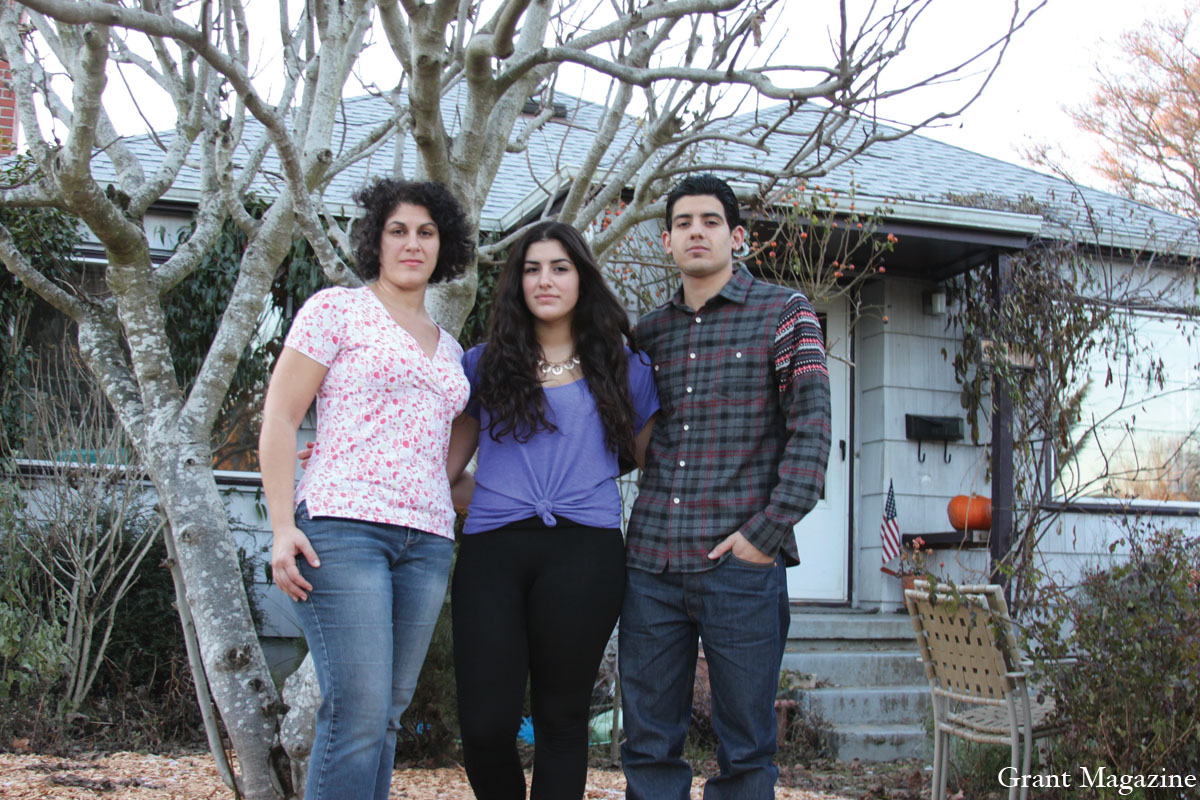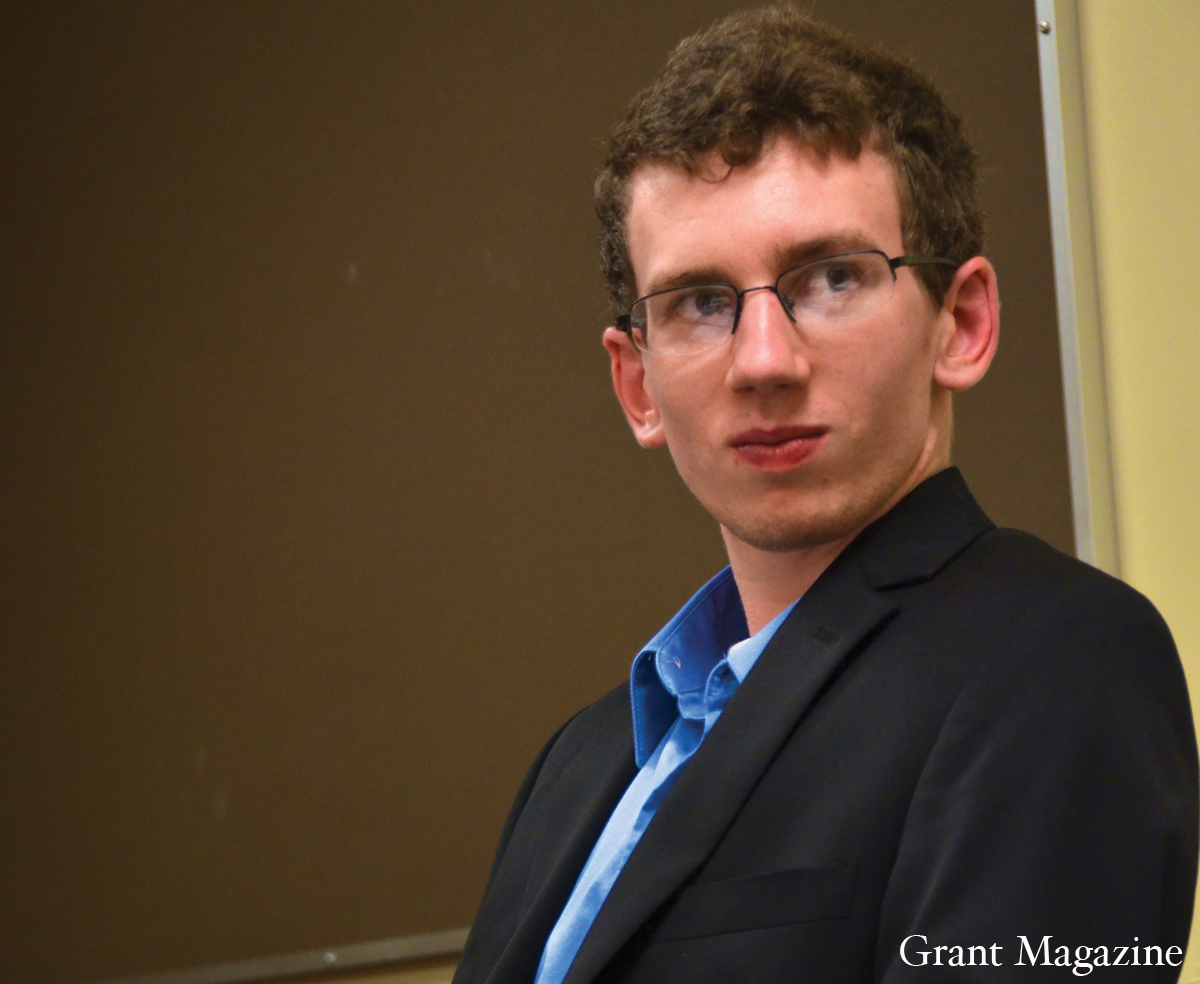Grant High School senior Isaac Archer started playing club soccer when he was 10. He was on one of the pioneering teams of the Northeast United Club, and his dad, Michael Archer, helped create the organization.
For Archer, now 17, soccer has always been a family affair, with his parents trucking down to all of his sister’s college games at the University of Oregon. Since his early introduction to soccer, he has achieved success by playing varsity for two years. And he hopes to follow in the footsteps of his sister by playing soccer in college next year after finishing this season on the Grant boys’ varsity team.
The Archers aren’t the only people deeply ingrained in the world of soccer. The sport is huge in Portland. Professional teams like the Portland Thorns and the Portland Timbers attract droves of fans. The University of Portland’s women’s team is a dynasty, consistently ranked in the NCAA’s Top 20 teams each year.
Kids of all ages try their hands (and feet) at the sport on recreational teams, through school athletics and on extracurricular club teams.
Players, starting as early as elementary school, join soccer clubs – leagues that require high yearly costs – to further themselves as athletes. As players grow older, the stakes get higher on these more competitive, tryout-based teams. Kids receive advice from paid coaches and have the opportunity to travel in showcase tournaments.
While these teams often work in harmony with school soccer programs, a recent expansion of the U.S. Soccer Development Academy’s official soccer season presents a conflict for Grant and other high school soccer programs, complicating what some say is an already muddy relationship. Part of the friction arises from the fact that some of Grant’s soccer coaches work for extracurricular clubs as well, a link that can produce the perception of bias during tryouts and on the field.
“This isn’t recreational soccer. This is competitive soccer and they keep standings.” – Tim Copeland
With the overlapping seasons and coaching staff, many wonder what the future holds for high school soccer. Last year, the U.S. Soccer Development Academy announced that all of its 78 developmental teams across the country – most of them for high school aged kids – would be moving to 10-month seasons.
Portland has one of these club academy programs. With two age-specific boys’ teams comprised of about 25 members each, the Timbers Academy is the fourth stop on the program’s seven-step “Pathway to the Pros” pyramid. In theory, the final batch will make up the Timbers’ Major League Soccer team.
The two teams consist of the best under-18 and under-16 players that the program can find. Many of these players are discovered through their involvement in the lower levels of the program.
Academy players receive intense training, according to Gary Osterhage, director of competition for the Washington Timbers FC, an affiliated club. Osterhage has been involved in soccer through various coaching roles at the high school, club and collegiate level.
About the academy program, he says, “If you’re in academy, you’re getting five or six days a week of training, you’re getting competition all over the West Coast, across the nation with other MLS Academy teams.” What you get from the program, he says, is elevated far above the training a soccer player gets through a regular soccer club. He rattles them off: psychological training, weight lifting, speed and conditioning, technical work.
The extended season, according to the organization, is an attempt at revamping the United States’ soccer prowess on an international stage. In other countries around the world that have had success in soccer, players are practicing much more than those in the U.S.
But the academy teams’ move to a schedule that overlaps with the high school season leaves many elite players with a tough decision to make: either stay with their high school teams or move to the next level. If they choose to continue on, they leave old teammates behind.
Shanti Dubey, 15, considered trying out for the Portland Timbers’ Academy team last summer. He had played in the Olympic Development Program – a level just below the academy – for four years and already had a foot in the door because of the two programs’ overlap in coaching staff. The academy program, he says, would have offered him experience in high-level play, as well as connections to college coaches.
But Dubey ultimately decided against trying out for the academy team because it would have forced him to give up both high school soccer and tennis, and it required travel almost every other weekend. He also preferred the high school environment and found it to be more fun. He played defender on this year’s Grant boys’ varsity team.
Not to say that high school soccer is all fun and games, though. Tim Copeland, the girl’s varsity coach at Grant, says: “You want to finish as high as you can. This isn’t recreational soccer. This is competitive soccer and they keep standings. Every game counts.”
Nonetheless, players say the high school teams are generally more laid back.
Osterhage says the club style of play is much more possession-oriented, requiring a higher demand of technical skill. The high school game tends to be “athletic-driven, a little more direct, where they’re sometimes playing long balls” up to the offense.
Manolis Tjuanakis, who has been coaching Grant boys’ soccer since 1999, says the transition from club to high school can be hard for players because, in club, they play against their age group with “a certain style…and now you bring them back to high school, they now have to adjust to a different system.”
Additionally, pulling together a team in the short high school season sometimes proves challenging, he says. “As a coach, you only really have two and a half months to make that work,” Tjuanakis adds.
But a short season isn’t the only cause of frustration in Grant’s soccer program. With many of Grant’s coaches also working for soccer clubs outside of school, some feel that players they know from the clubs are unfairly favored over others at Grant’s tryouts.
Senior Madeline Abrams, 17, who didn’t make a team this year, acknowledges this: “It makes sense because (the coach) sees those people all the time,” she says. “But then it’s hard for everyone else who only has three days to prove themself and might work twice as hard. There’s only so much you can do.”
She says she thinks there should be a system that is completely impartial when it comes to tryouts.
Johanna Volz, 21, is currently in her junior year at Florida International University. The 2011 Grant graduate sees it a little differently. She feels that any truly talented player’s skills should shine through. Including the training before tryouts, prospective players in high school have almost two weeks to prove themselves to coaches.
Volz admits that, of course, coaches will know their club players better. But that didn’t stop her from making varsity as a freshman after playing for the Bridlemile Soccer Club, which was not widely represented on the coaching staff.
Going into college, she says, the dynamic was no different than in high school soccer. There were people on her coach’s club team. “So obviously, he’s seen those players play a lot longer than me, but at the end of the day, I still have to go prove myself,” she says. “So there’s always going to be people that are in advantage, but you just have to find a way around it.”
Jordan Green, a 2010 Grant graduate who played club soccer during his senior year, says club players are the obvious choice for coaches simply because they’ve had more time on the ball.
Grant boys’ junior varsity soccer player Blake Bronson, 17, agrees. The Grant junior says he doesn’t think there’s always a bias.
Bronson does take issue with club soccer being an essential requirement to making a team. He asks: What about the people who participate in other sports and can’t play year round club? That, he says, is where club soccer bleeding over into high school soccer is unfair. Not everyone has the time or money to play club soccer in the off-season.
Mike Woitalla, Executive Editor of Soccer America magazine, says club used to be exclusive to kids who showed great “talent” and ambition in the sport, and even then they waited to join until they were between the ages of 10 and 12. Today, all levels of players try out for club teams.
Grant sophomore Kacie Mackey, 15, has played club soccer since she was in fourth grade. This fall, she played junior varsity for Grant, as well as swinging up to the varsity team. She says club soccer not only takes a huge time commitment, but a monetary responsibility, too. “When you first join club, it’s a good amount of money because you have to pay for uniforms and all of that stuff,” she says, adding that the yearly cost, usually in excess of $1,000, encompasses a variety of things from tournament fees to travel expenses.
Woitalla sees this expense as deceptive and in most cases unnecessary. “I think a lot of people buy into the idea that their kids can get a scholarship, and so they think, especially if it’s implied to them by the coaches who want to make a lot of money off of soccer, that it’s worth it for them to move into a competitive team at a very early age,” he says.
Today, soccer players at Grant agree that playing for a club team outside of school is a prerequisite to getting recruited by colleges and even making the high school teams. Yet, only a select few club players will end up with soccer scholarships. And even fewer will get the chance to play on a professional team.
There are stories of success through club. Green went off to play soccer at Concordia along with his sister, Kianna. Other past Grant players have found a path of success via the club route. And even though the numbers are small, there are always players who find a place beyond high school in the soccer world.
Nick Schwartz, a coach at Lake Oswego Soccer Club, has been involved in the sport ever since his daughter “volunteered” him as the coach of their recreational team in New Hampshire. He acknowledges that most who play club soccer won’t play beyond high school. Though, he thinks that is beside the point. “In my view, you play competitive soccer to teach you how to become a better person,” he says.
Schwartz also spent a year on the Oregon Youth Soccer Academy board as treasurer of the foundation in the late 1990s, raising money for club teams around the state. Clubs that received money had the choice of what to use it on. Many, he says, set aside chunks for scholarships for at-risk or low-income kids.
“No kid who wants to be able to play competitive soccer, who has the talent to play competitive soccer” is stopped from joining the club, he says. “There’s resources available.”
Schwartz says soccer should be seen as something beyond the game itself. “Most importantly what the sport teaches young people off the field, and life lessons that it teaches to young men and women off the field about competition, about commitment, about sportsmanship, teamwork, things that everybody needs later in life,” he says. ♦




































